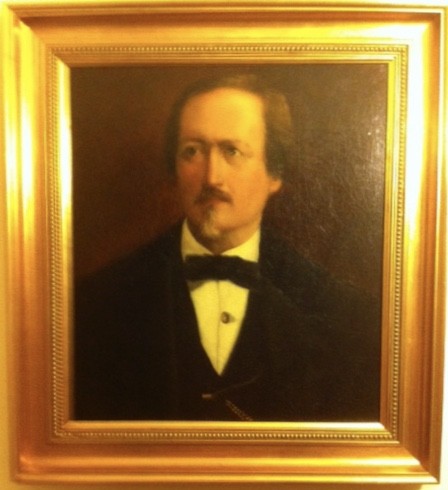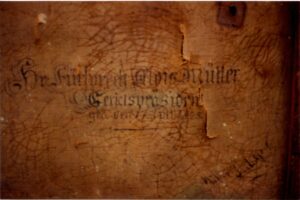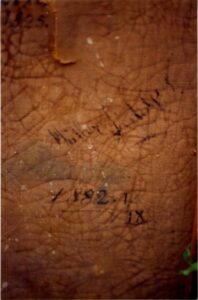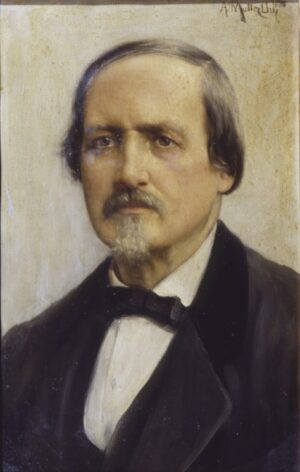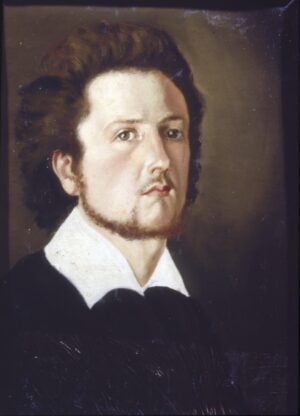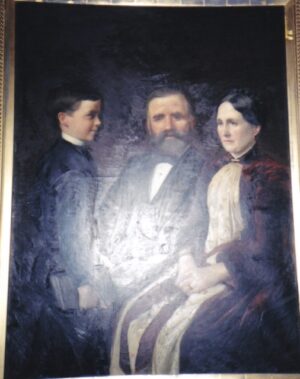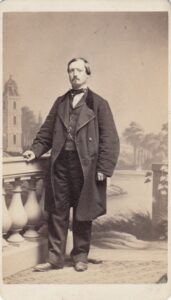
An photograph of the artist’s father c. 1870.
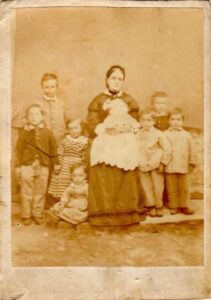
Alois Müller’s wife Genovefa Lombardi with eight of their young children, circa 1865.
The sitter was born in 1825 and died in 1887. He was described in the Dictionnaire Historique & Biographique de La Suisse (Neuchatel, 1930), Vol. 5, p. 42, No. 17, as ‘…d’Hospental, constructeur d’hotels et historien.’
The sitter married Genovefa Lombardi, daughter of Felice Lombardi, the Director of the St Gotthard Hospice, in the 1850s, and was based in Airolo where he practiced law. They had nineteen children (seventeen pregnancies as there were two sets of twins), and the artist was the sixth child.
This portrait, painted very soon after the artist had returned from his studies in Munich, apparently dated on the verso November 1, 1882, very much reflects the training he must have received there from the Hungarian artist, Gyula von Benczur. Precisely painted and yet sensitively modelled, this portrait of his father must have acted as a means of showing his father what he had learned from his two year stay in the Bavarian capital. It is true that the first exhibited picture in 1884 was some sort of seascape, Idylle or Idylle am Meer – it is tempting to think this may be the large picture visible in the 1903 photograph of a corner of his studio reproduced in American Vogue (see Brief Biography) – but this portrait clearly was a significant milestone for the artist, totally different from the Deschwanden style in which he had painted before February 1881.


